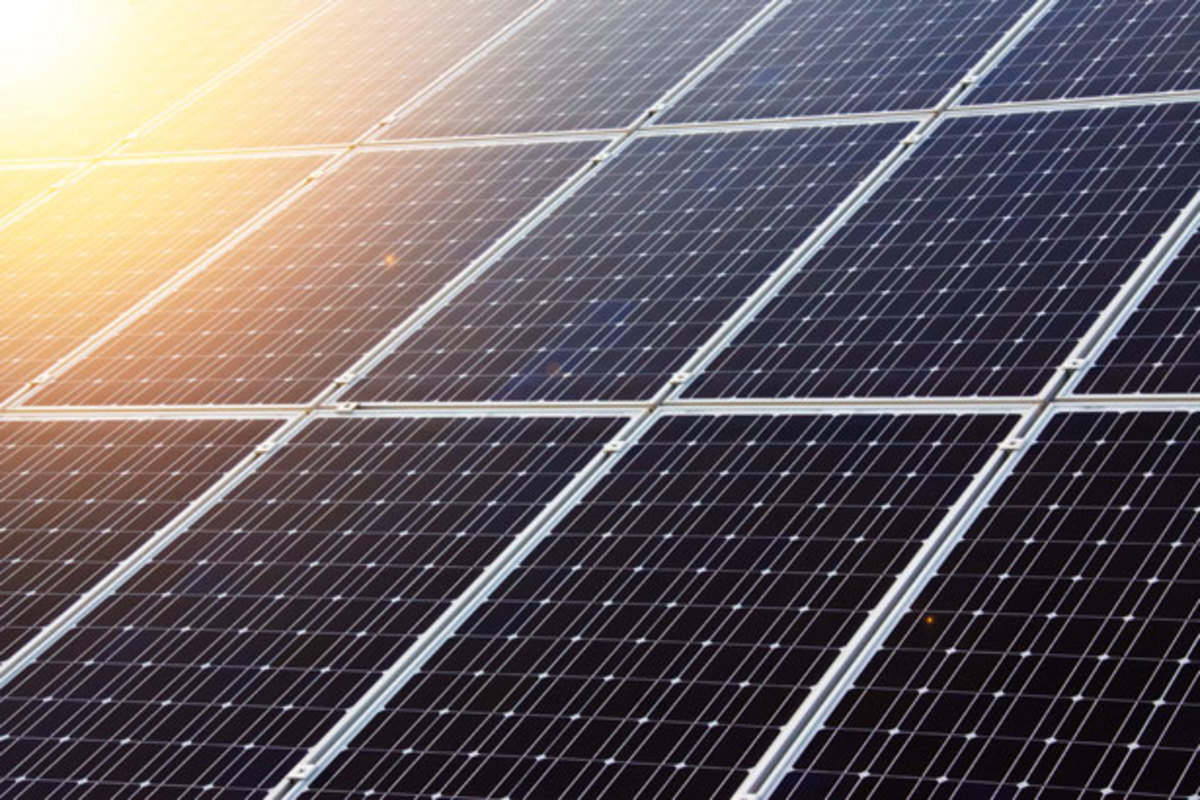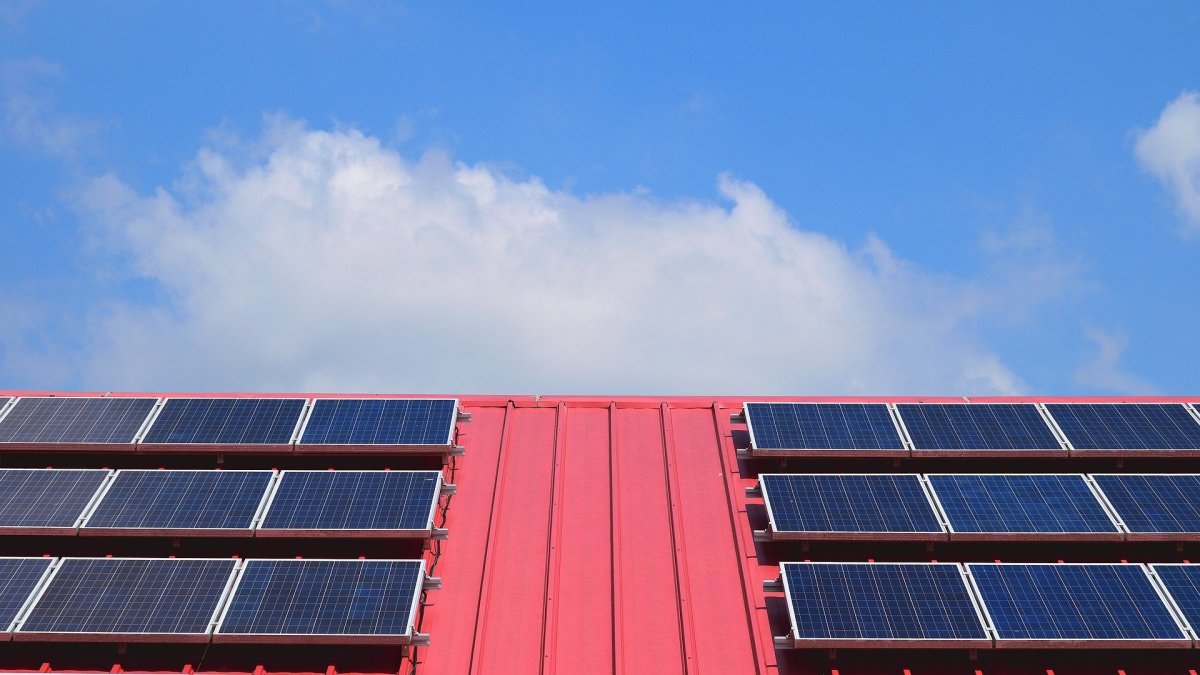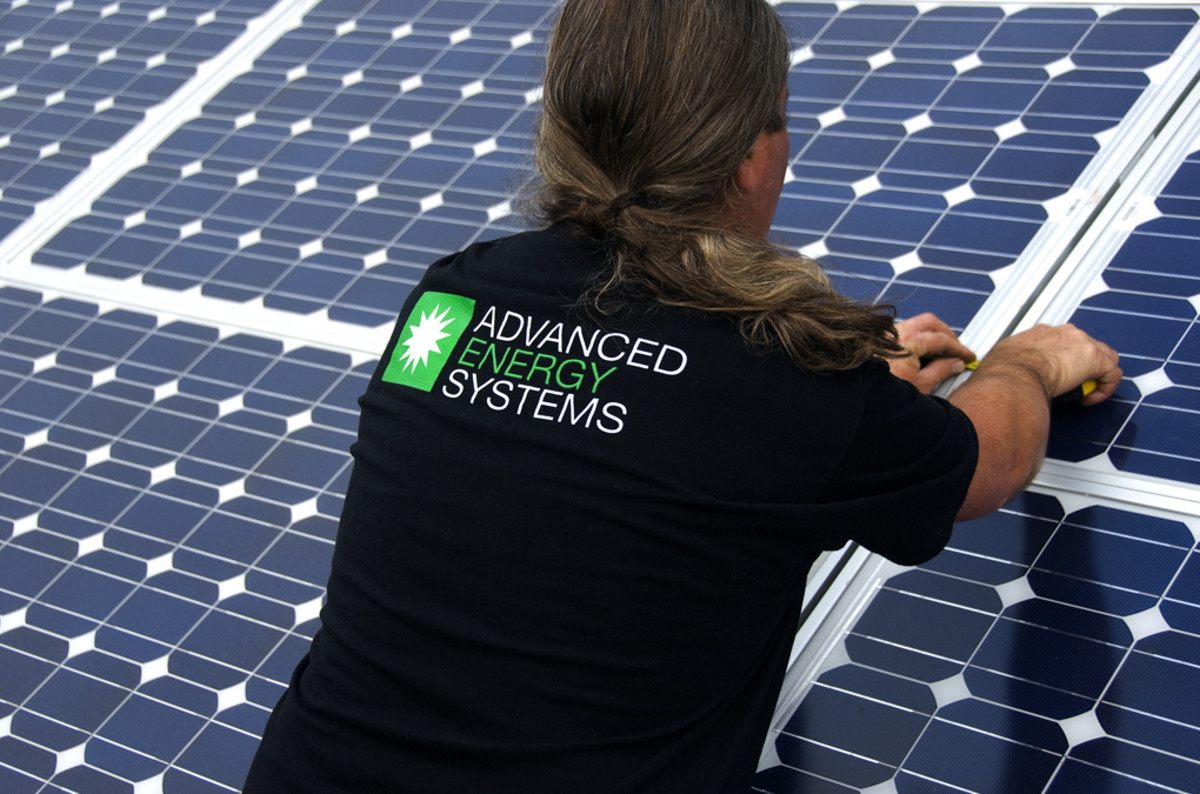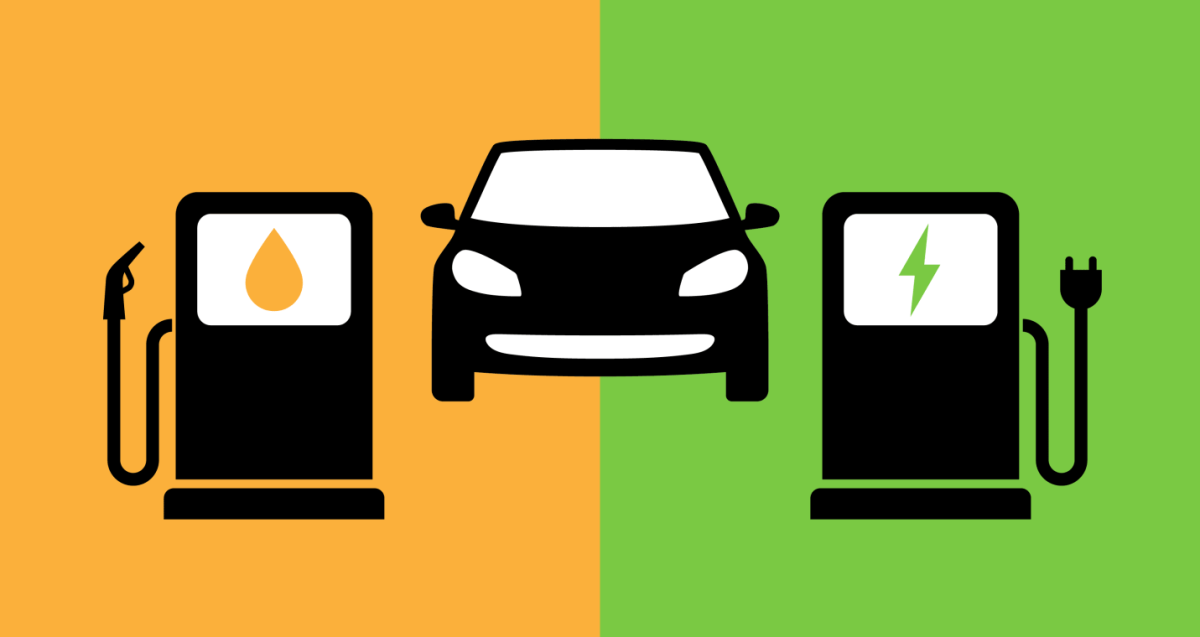All About Solar: What You Ought to Know
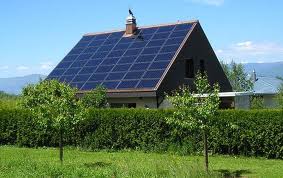
The solar energy industry is an ever-expanding field that presents people with many exciting opportunities. This country and the world can benefit, environmentally and economically, from furthering the development of and consuming more solar energy, also known as PV (photovoltaic) energy, a term used more among the scientific and industry communities. Solar energy is an alternative to oil and natural gas. It is a renewable, non-polluting energy source that is extremely efficient. In recent years, some people have decided to give what has been termed “going green” a try. Through the research published by respected scientists and through clever marketing campaigns, a call to action has been sent out to everyone to mitigate their carbon footprints and thus, lessen the effects of climate change. When tax incentives started being offered for people who installed solar panels on their homes and others realized renewable energy became cost effective over time, more jumped on the bandwagon. The following intends to explore the economics behind solar energy, its environmental sustainability, future use, the science behind the energy source, and what it means for the world.


The History
It may surprise some that the origins of the modern solar energy industry date back to the 1860s. In 1861, Augustin Mouchout, a French scientist, suggested that coal was a limited resource and if people continued to use it at the rates they were, it would run out in the future. The Industrial Revolution was at its peak during the 1860s. Everything was being powered by coal – from factories to trains to the heating of homes. Civilizations in Europe and North America were experiencing an economic and technological boom, partly because people in the Western World had discovered the so-called endless capabilities of coal. Although Mouchout remained a respected physicist, people in the scientific, engineering, and industrial communities guffawed at what seemed to be a preposterous idea. At a time when coal was used to power all things mechanical and was advancing nations, both economically and technologically, it did not strike even the most educated people that it could be depleted to the point of no return – that any resource could ever run dry. We now know that Mouchout was accurate in his prediction, but his peers were unaware of his brilliance. Despite his critics, Augustin Mouchout sought out an alternative to coal as a power source.
Looking back in history to the ancient Empires of Greece and Rome, Mouchout realized that both societies used what would later be termed “passive solar design in architecture”. The ancient Greeks and Romans covered the south-facing openings of their buildings with mica and glass to attract the heat of the sun indoors during the colder winter months. Although a relatively simple technology, this method proved to be effective for indoor heating. After examining these Greco-Roman architectural principles, Mouchout came to the conclusion that if societies before him were able to harness the energy of the sun to heat their homes, then why couldn’t he do the same, as well as use the sun to power the trains and the factories? Mouchout developed a steam engine that was powered by the sun. The device functioned well. However, the engine was expensive to produce and its development came at a time when the price of coal in Europe and North America was falling. Mouchout’s solar-powered steam engine was quickly brushed off and the coal-powered Industrial Revolution continued to move forward.
Although Augustin Mouchout’s invention did not take off as he had hoped, it did inspire other European scientists to tinker with the idea of the sun as a power source. Throughout the rest of the nineteenth century and the first half of the twentieth century, physicists and engineers attempted to improve upon Mouchout’s original concept. However, the devices that they developed lacked the practicality that Mouchout’s engine had. Often, their inventions were completely non-functioning. During this time period, the British and French governments funded scientific research to learn if solar power was a viable option for providing electricity to their colonies in Africa and Southeast Asia. The scientists of that time were never able to figure out a way to make it work.
Almost an entire century passed before another important development was made in solar energy. In 1953, Calvin Fuller, Daryl Chapin, and Gerald Pearson, American scientists and employees of Bell Telephone Laboratories (now AT&T), introduced the first silicon solar cell that could generate a noticeable amount of electricity. Although their discovery was a popular story in newspapers, the solar cell did not reach consumers due to its astronomical cost (expressed in today’s dollars, the cost of one solar cell in 1953 was around $3,000 – six-hundred times more than what it would cost nowadays!). The Space Race of the late 1950s and 1960s between the United States and the Soviet Union provided for the first practical opportunity for solar cells to be used. American and Soviet spacecraft and satellites had their exteriors covered in solar cells so as to provide electricity to the interiors. This practice is still being implemented today.
It was not until the 1973 Oil Crisis and again following the 1979 Energy Crisis that interest among the American public for alternative energy sources, like solar, was spurred. Coupled with an increased sense of environmental awareness, the U.S. government funded research that looked into solar power as a way to decrease dependence on foreign oil. The government invested tax dollars into further researching the solar cell that Fuller, Chapin, and Pearson had come up with two decades earlier. They were looking for ways to make the solar cell more affordable and efficient. By the 1990s, solar power was becoming popular in Europe and Japan due to skyrocketing fuel costs. However, during the same time period in the United States the picture was different. Fossil fuels were inexpensive compared to the installation costs of a solar panel. It was not until the 21st Century that people began to shift their attention more towards solar as the costs of fossil fuels increased and the costs of solar decreased, while, at the same time, people have become more environmentally conscious.
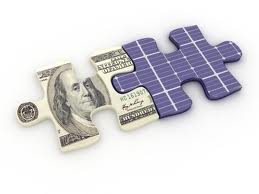
The Economics: Dollars and Cents
You may have thought about solar energy and said to said to yourself, “Sure, solar energy’s great and all, but it seems like it would be expensive.” You were correct about two things: one, solar energy is great; two, the initial cost for solar panel installation is fairly expensive. Residential panel installation can range in cost from a few thousand dollars (for a small project) to tens of thousands of dollars (for a large project). However, the latter view fails to think in a long-term perspective. Although solar energy has a large initial cost for panel installation, one will actually save money over a period of time because one will either have to pay less on their electric bill or, they will not have to pay an electric bill. If your panels produce more energy than you need, you can sell that energy back into the main power grid and make a profit. For those that install a solar thermal heater, a solar-powered hot water heater, one’s heating bill would decrease. One also must recognize what their power source is: the sun. The sun is free. Your only cost is the upfront installation fee, as well as maintenance fees should your panels malfunction or if an upgrade is needed. However, maintenance and upgrades are rare due to solar energy’s reliability. Often, these things are included as part of the upfront installation fee.
The solar energy industry in the United States experienced its first decline in demand in ten years in 2009 because of the recession. To remain competitive, prices for solar panels and their installation fell an average of forty percent to an average cost of $2.25 per watt of electricity, a significant decrease from the $5.62 per watt that solar electricity averaged in 2008. That was $3.37 per watt in savings. Next year, in 2013, due to a projected increase in global demand, the average price for a watt of solar electricity will further fall by $0.66. This may seem miniscule, but it is actually significant when one considers how many watts of electricity a solar panel can produce.
The cost of fossil fuels and other polluting, non-renewable forms of energy will continue to rise. Sooner or later, solar will become competitive with fossil fuels. Eventually, solar energy’s immediate cost effectiveness will trump the immediate cost effectiveness of fossil fuels. We already know solar energy’s cost effectiveness beats out fossil fuels in the long-term. The IRS also provides tax credits for those that install solar panels on their home or business. The most important thing to consider about solar energy, though, is something that sits outside the realm of monetary economics – solar energy should be thought of not only as an investment for your wallet, but as an investment for the future of you and the entire planet. That is the wisest investment one can make. Even if you have not had solar panels installed on your home, even if you do not work in the industry, there is still money to be made and saved through solar. During the third fiscal quarter of 2008, investments made in solar energy peaked at a net profit of $1.212 billion. It was predicted that this would have continued into the fourth quarter had it not been for the economic downturn in the fall of 2008. A year later, in the third fiscal quarter of 2009, net profits for solar energy investments were reported at $451 million. Obviously, this is far from as significant as the net profits from the previous year, but it is rather remarkable for a relatively new and relatively small industry during a period of economic slowdown.
When the Obama administration came into office, President Obama pledged $150 billion to alternative energy as part of his economic stimulus package. The idea was to further the development of green technologies, like solar, in the United States. This has the potential to create millions of new jobs, as well as bring down the costs of solar energy for the consumer significantly. Between 1998 and 2007, jobs in the “green energy” sector grew at an average rate of 9.1% annually. The average growth rate for all other jobs between those years was 3.7%. In 2007, there were over 68,200 green energy businesses that employed approximately 770,000 individuals. In 2007, in the United States alone, 32,040 individuals were employed in the solar energy industry, performing an occupational function that solely involved energy generation. These statistics were affected by the recession, but they have since improved. The jobs available in the solar industry are not just for people who want to get up on roofs and install panels, though. There are solar energy industry jobs for people of all career backgrounds. People are needed in all aspects of the industry – installation, maintenance, research and development, business (sales, marketing, public relations, accounting, finance, etc.), administrative, government, consultative, information technology, transportation, nonprofit, communications, education, and more.
Opportunities are available with a wide spectrum of employers – everything from start-ups to well-established corporations. For the past six years, Germany’s SMA Solar Technology, one of the world’s largest manufacturers of solar energy equipment based in central Germany, has been voted as Europe’s seventh best large company to work for by the Great Place To Work Institute (Europe), Europe’s version of Fortune magazine’s annual list of the “Top 100 Employers to Work For” in the United States. The lists are based on how much the company is trusted by its employees, the company’s reputation, corporate culture, demographic diversity among employees, employee benefits, and perks. SMA Solar Technology is ranked only behind Microsoft, Google, Cisco, and 3M, corporations known abroad for their superior treatment of employees, as well as a German financial services company (impuls Finanzmanagement) and Fater, an Italian manufacturer of personal hygiene products. Solar energy companies, both small and large, both start-ups and established enterprises, have gained a reputation for their nurturing of a casual, yet productive, work atmosphere. This may remind some of the corporate culture of computer companies that was glamorized during the Internet Boom of the 1990s and early 2000s that still exists today for those companies. The difference here is that the solar industry is much less likely to bubble due to energy’s necessity and constant demand.
After completing a two or four-year vocational training program or equivalent experience in on the job training, PV technicians and solar thermal technicians can expect to earn an average of $40,000 annually as entry level employees. Plus, as mentioned earlier, the occupational growth rate for careers in this field was three times the national average for all other occupations. In fact, a rising demand for renewable, non-polluting energy sources, like solar, has prompted four-year colleges and universities, community colleges, and technical schools to develop training programs for students wishing to enter this field as specialized workers. This has given hope to both laid-off workers and those that are just entering the job market. This also creates jobs for instructors with relevant experience in the field and serves as a revenue generator for educational institutions. All this information about jobs in the solar industry may seem trivial, but one must realize that this is what many politicians, including the President, have proposed as a means to lower the high unemployment rate and thus, help stabilize the economy. In 1994, the United States Bureau of Labor Statistics issued a report that stated 5 million new jobs had been created over the prior two years. However, as it was later revealed, the majority of those 5 million new jobs were part-time, often temporary, employment that paid minimum wage and offered little to no benefits. Jobs in the solar sector are the complete opposite of this.
The purpose of the aforementioned section on employment in the solar energy industry was to illustrate that careers in the industry are not menial jobs that the government offered as a temporary fix-all to the current economic crisis. They are full-time, good-paying careers with benefits for skilled workers with reputable companies that show respect for their employees. They are careers in which one can make a difference by providing energy to people through an environmentally sustainable and efficient manner.
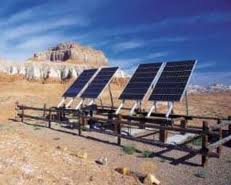
The Environmental Hazards of Solar Energy: Say What!?
Solar energy itself is one-hundred percent sustainable. It can be continued and become widespread as a form of energy used throughout the world without having any negative effects on the environment. However, while the energy itself is totally sustainable, the solar panels do have the potential to cause negative effects. First of all, solar panels take up space on land. This has the potential to deplete and/or destroy ecosystems. Secondly, materials used in the production of solar panels must be taken into consideration. There are many materials required to produce solar panels, and if all the materials needed to produce solar panels are extracted, processed, and disposed of properly, none of them are harmful to the environment. Crystalline silicon is primarily used to make microprocessors for computers, but it is also used in solar panel production. Silicon itself actually contains elements found in sand and quartz. It is processed into silicon through a method that relies heavily on heat. Wood, charcoal, and coal are placed into an electric arc furnace (most commonly found to heat steel in steel mills) for this process. This has the potential to cause unintended environmental damage. If the world relied on solar energy more solar panels would have to be produced, thus, more silicon would have to be processed.
Gallium arsenide is a toxic compound used for very little. However, it is important in the manufacturing of semiconductors for solar cells. The big problem with gallium arsenide is it is partly composed of arsenic, a poison. If arsenic was not disposed of in an appropriate manner and it found its way into human food or drinking water, the results would be negative. Carbon, another material in solar panels, generally has to be mined if it is to be used in manufacturing. Plastic is also used in the manufacturing of solar panels. Plastic comes from petroleum. We know that the extraction and processing of petroleum has some extremely negative effects on the environment. However, the great thing about plastic is that it can be recycled. Metal alloys and electrical wiring, aluminum and glass, all materials needed to manufacture solar panels, are also all materials that need to be mined. It is undeniable that solar energy does pose some environmental hazards. However, wind energy, tidal power, geothermal power, and hydroelectric power – all efficient, clean forms of renewable energy – pose environmental hazards, too. We must recognize that solar energy’s pros strongly outweigh its cons. The environmental hazards and risks that solar energy pose are miniscule compared to what we are doing to the environment today with oil and natural gas. And, as long as installation crews survey areas before they install solar panels and do not install the panels in a place that would disrupt an ecosystem, solar energy remains environmentally safe. Solar energy and the solar energy industry have a great environmental reputation. It is doubtful that will end anytime soon.

The Efficiency, Durability, and Lifetimes of Solar Panels -- And Their Susceptibility to Snow
Currently, a solar panel converts about 15% of the sunlight that hits it into usable electricity. Do not let the number fool you. This is actually very efficient, competitive with oil and natural gas. Scientists who specialize in solar energy are currently in the process of developing more efficient solar panels that convert a greater amount of the sun’s rays into electricity. Prior to purchasing solar panels for their home or business, people who live in areas where it snows in the winter should be aware of one thing – the efficiency of solar panels is susceptible to snow. There is a misconception among many owners of solar panels, as well as among some employed in the industry, that because solar panels are designed to attract the sun’s rays, snow will naturally melt off quickly. Not so.
Anyone who has ever been skiing, snowboarding, or snowshoeing knows that the reason one wears goggles is because snow itself reflects the sun’s rays and without proper eye protection, it can be very bright for the avid recreationist. Does snow melt off the mountains? Naturally, yes. Quickly, no. The same is true for automobiles, roofs, and sidewalks. If you wait long enough, allowing snow to pile up and sit there, it eventually will melt off cars, roofs, and sidewalks. If you want the snow removed quickly, you have to do it yourself by shoveling, scraping, and brushing. The same is true for solar panels. If you want your electricity, you must put on your parka jacket and go out there to shovel, brush, and scrape the snow and ice off yourself. This task must be done more gently and carefully than it would with a car, roof, or sidewalk due to the sensitivity of solar cells. However, that and brushing dust and dirt off is basically the only maintenance a solar panel requires. If you are too lazy to remove snow and ice from your solar panel(s) and are willing to wait until the spring thaw to get it working again, you’re probably still hooked up to the main electrical power grid, so no worries. However, that’s not thinking sustainably. Solar panels also do not last forever. They have a lifespan of about thirty years before one must replace them. Even with a large initial installation cost, thirty years gives enough time for a homeowner to not only break even, but also save a significant amount of money. Scientists that research solar technologies are currently in the process of developing panels that last for longer periods of time.

Solar Energy: A Bright Future
Predictions have been made that solar energy production and consumption will increase in the future. These predictions have been made by experts in the solar energy field and other facets of the renewable energy sector. We know, based on trends, that the costs of fossil fuels have been steadily increasing over the years, consistently outpacing inflation. Due to the limited availability of fossil fuels, their continued depletion, and ongoing conflicts in oil-rich areas of the world, it is certain that the costs of fossil fuels will continue to rise exponentially. We know greenhouse gas emissions from fossil fuel consumption are depleting the ozone layer and are the root cause of human-induced global warming. Global warming in itself causes many separate problems that humans have become increasingly concerned about and rightfully so. Ironically, all of the major oil companies have set up departments within their corporations that are devoted to solar energy, as well as other renewable energy resources. Is this the people who caused the problems trying to take a stab at fixing them? Sadly, no. This is greedy companies trying to get their foot in the door of solar energy and other renewables. When fossil fuels are no longer profitable due to increased production costs and decreased demand, corporations like Chevron, Exxon Mobil, Texaco, Valero, and British Petroleum do not want to go out of business. What this shows, though, is even unexpected companies are seeing the potential of solar energy for the future.
We have become more environmentally conscious. Governments have implemented policies and programs which favor mitigating the devastating effects of global warming, such as, tax incentives for those that use solar. Programs like these exist in one form or another in virtually all industrialized nations, as well as many developing nations. In fact, in order to become a member state of the European Union, candidate countries must demonstrate a certain percentage of their national energy comes from renewable energy sources. Should the nation join the European Union, the EU provides funds to increase the new member state’s renewable energy production and consumption.
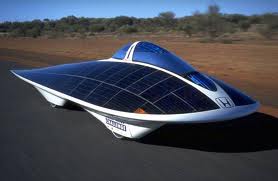
The Solar Car
For decades, the idea of solar-powered vehicles has been toyed with. Prototypes developed in the past were slow, did not travel long distances, were both slow and unable to travel long distances, or did not function whatsoever. However, with a greater interest and demand for solar cars today and in the future, research and development for the vehicles may progress to new heights, thus one day putting a clean, efficient, affordable automobile, powered entirely by the sun, on the roads and highways.
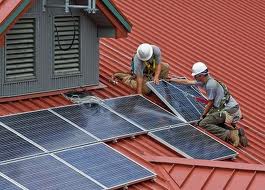
The Science of Solar
Personal consciousness, a sense of responsibility to the environment, government influence, and economic benefits play roles in peoples’ decisions to turn to solar and other alternative forms of energy. Solar energy will become more affordable over time and eventually will become accessible to the masses, based on significant drops in prices that trends have been witnessing. One day, the competitiveness of the installation cost of solar panels will likely trump the costs of fossil fuels. This day may not come for a long time, but it is inevitable to occur at some point. And, as you read in the aforementioned, scientists and those employed in the solar energy industry are currently in the process of developing innovative methods to make solar more efficient. It would be fair to say that solar has a very bright future.
“How does solar work?” The actual scientific processes that allow solar energy to function are based heavily in physics and chemistry applications. For an active solar panel to operate and thus, produce electricity, the sun’s rays first have to hit the solar panels. Generally, solar panels consist of a large, flat piece of metal, square or rectangular in shape. Wiring runs through the panels, while glass and solar cells cover the top. In solar electricity generation, due to the presence of the photoelectric effect, light enters the solar panel. The metal absorbs light energy. An electron is then kicked out. The electron is trapped and it moves to a solar battery for storage and distribution. Moving electrons cause an electric current to occur. The solar battery then allows you to turn on your light switch, television, or operate your microwave. Different metals produce different electrical currents. The higher the energy light the quicker the electron is released. Light intensity determines the amount of current. To simplify, as the sun’s light passes through the solar cells, many electrons are released and go to the area of the solar cells with a shortage of electrons. The loss of electrons allows an electrical current to take place as they go through a part of an electric circuit to the area that has a shortage of electrons. This produces electricity.
Solar batteries can distribute energy immediately after it is processed. Batteries are used to store energy for future use, distributing it when needed. Solar batteries work differently than other types of batteries. A car battery, in comparison to a solar battery, must give off a large current of energy for a short time in order to get the vehicle to start. However, after the vehicle has started, the car battery is able to be charged by the vehicle itself so that it may operate for a longer time span. This is important because when the sun is not out to generate power for the battery, the battery must generate the power by using the electricity it stored during the time when the sun was out. When the sun is not blocked by clouds or the night, the solar panels collect a direct current from the sun. In order to be stored in the solar battery, the direct current is converted into an alternating current through a converter and then, an inverter.

Solar Thermal Heating
Solar thermal heating, which also goes by other names like, passive solar, solar water heating, and solar hot water system, is equal to solar electricity in its efficiency, cost effectiveness, and environmental sustainability. In most residences in industrialized nations, especially the United States, the hot water that is used for domestic use is heated by a fossil fuel-based source. Solar thermal heating heats water just as well as a traditional water heater would, but without any of the environmental consequences of using fossil fuels. This is necessary for a contrast between the two separate processes. It will strengthen and appreciate understanding. There are actually many different methods in which a solar thermal heating system can be built and properly function. In the following, only one process will be described because this design is the most common type of solar thermal heating.
In solar thermal heating, the solar panel collects the sun’s rays. It traps heat inside of it. Solar panels trapping the sun’s light essentially mimic the greenhouse effect in the solar collector. Regardless of the temperature outside, the solar thermal heating system can heat water in an efficient manner. This is because the panel is designed to trap the sun’s rays and insulate itself from the outside atmosphere. As long as the sun is out during some point in the day, one can get warm water. When the sun’s rays go through the panel, heat is generated as visible light is converted into infrared light, which gets trapped in the collector. The heat warms up the water, pumped through to a special tank on the opposite side of the panel. Water in thin coils increases the surface area. Thus, the heat exchange is sped up. A water pump, powered by electricity that comes from the residence’s electrical source, whatever that may be, moves water through the system. Generally, one will get back ten times the amount of energy, in the form of hot water, which one put into it through the electricity powering the water pump. For more money, one could purchase a solar thermal heating system with a separate panel attached to generate electricity to power the pump. In order to expand and contract the water through pressurization, thus warming it up and cooling it down to the desired temperature, an expansion vessel is installed into the piping. The expansion vessel changes the volume of the water going through the piping so temperature can either be increased or reduced. It has been proven that as water volume increases, so does water temperature. This is caused by heat capacity. Heat capacity is the amount of heat required in order to increase the temperature of one gram of a substance by one degree Celsius. All liquid materials have different heat capacities. It takes a fairly long time to boil water, but a fairly short time to boil alcohol. The liquid in solar thermal heaters works like the Freon in an air conditioner or refrigerator. As you compress a material it releases heat, which gives the illusion that it’s hotter because it is releasing the heat into your body. As you decompress a material it absorbs heat, giving the illusion that it’s cooler because it is absorbing the heat from your body. On the other side of the system, there is a hot water tank. The hot water produced by the solar panel is moved to this tank through the heat transfer coil, a flat tube. After the hot water has passed through the tank, it can enter the building and be dispersed where needed. A device known as an electronic controller oversees the whole system. It monitors when the solar panel is hotter than the water. This lets it know when to turn the water pump off and on. And, for the record, a solar thermal heating system does not make a traditional water heater obsolete. The technology has not been perfected to that level yet, as there will still be days when there is not enough sunlight to power the solar panel, and thus, heat the water. However, with a solar thermal heating system installed, one will definitely use their traditional water heater less.
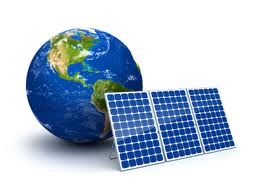
The Point
Solar energy can do many things for the world, but we must give it a chance if we are to accomplish anything. If solar energy was used on a more mass scale, clean, efficient energy would be provided to more people all over the world at an affordable price. Humankind’s carbon footprint would be mitigated. And, jobs would be created and economies would be boosted worldwide. Solar energy is difficult to argue against. In a few parts of the world, solar is already being used as a significant energy resource. The two nations that produce and consume seventy percent of the world’s solar energy are both in industrialized Europe. Germany accounts for almost half of the planet’s solar energy production and consumption, at a whopping figure of forty-seven percent. Spain, coming in at number two, produces and uses twenty-three percent of this statistic. The United States, considering its much larger population and land area, definitely lags behind.
Israel is a small country with limited natural resources. Despite the geographic region it is located in, Israel has very little oil and natural gas. Due to political tensions with Israel’s oil-rich neighbors, they get the majority of their petroleum-based products from the United States. However, the long distance between the United States and Israel makes for high transportation costs of goods. Israel has found ways to make due with predicaments that it comes across. Israel may not have much oil or natural gas, but it does have two things: a lot of sun and an intelligent, resourceful population -- Israel’s greatest asset. As a response to the 1973 Oil Crisis, a cooperation of Israeli scientists, businesses, and the government of the State of Israel have been working to further develop their sunny skies into an energy source. Solar energy accounts for three percent of Israel’s energy production and consumption, making Israel the highest producer and user of solar per capita. Solar thermal heating systems can be found in ninety percent of Israeli households, making Israel the largest producer and consumer of solar thermal.
Solar energy has two primary benefits: economic and environmental. Solar energy creates jobs and is cost effective for consumers. Solar energy is renewable, non-polluting, efficient, and would help mitigate the carbon footprint of people, thus decreasing the effects of global warming. Solar energy’s use is predicted to increase in the future because of the rising costs of fossil fuels, the limited availability of fossil fuels and their continued depletion, and greenhouse gas emissions from fossil fuel use depleting the ozone layer and causing global warming. Due to demand and developments made in the field, solar energy will become more affordable and efficient over time. As was discussed earlier, going from the sun’s rays to turning on a light switch involves a process based in chemistry and physics. Chemistry and physics are also applied in the storage of solar energy. Many nations outrank the United States in solar energy production and consumption. We, both as a nation and as a planet, not only should but need to use solar energy in a greater magnitude.

